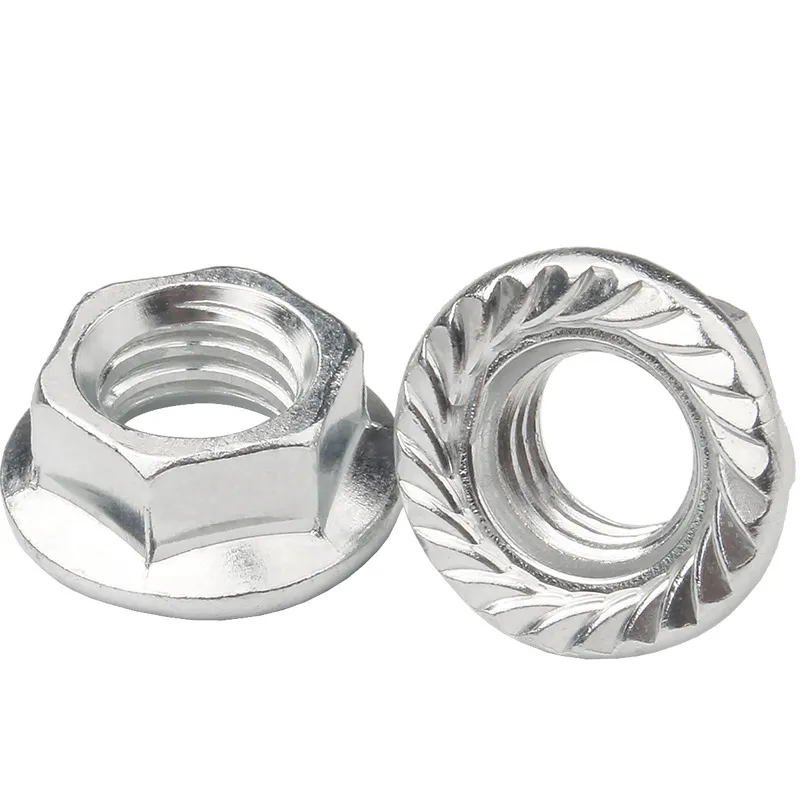

Galvanized A325 Bolts Offer Corrosion Resistance for Durable Steel Connections
Nov . 30, 2024 03:23 Back to list
Galvanized A325 Bolts Offer Corrosion Resistance for Durable Steel Connections
The Corrosion Resistance of ASTM A325 Galvanized Bolts
When it comes to structural integrity in construction and engineering, the choice of fasteners is paramount. Among the myriad options available, ASTM A325 galvanized bolts stand out for their specific properties, particularly in terms of corrosion resistance. Understanding the characteristics and benefits of these bolts is essential for industries focused on longevity and reliability.
Overview of ASTM A325
ASTM A325 is a standard specification defined by the American Society for Testing and Materials (ASTM). It covers the requirements for high-strength bolts that are primarily used in structural steel connections. These bolts are typically made from carbon steel and are intentionally designed to withstand tensile stress. The A325 designation indicates that these bolts meet rigorous requirements for mechanical properties, including yield strength, tensile strength, and elongation.
The Role of Galvanization
Galvanization is a process applied to steel to enhance its resistance to corrosion. It involves coating the steel with a layer of zinc, which serves as a protective barrier against environmental factors that can lead to rust and corrosion. For ASTM A325 bolts, this galvanization process is crucial, especially in applications exposed to harsh weather conditions, moisture, and corrosive environments.
The primary mechanism by which galvanized bolts resist corrosion lies in the sacrificial nature of the zinc coating. When exposed to moisture, the zinc reacts preferentially to form a protective layer of zinc oxide, which prevents further corrosion of the underlying steel. In essence, the galvanized layer acts as a shield, absorbing the corrosive elements and protecting the integrity of the bolt.
Benefits of Corrosion Resistance
astm a325 galvanized bolts are corrosion-resistant steel

1. Increased Longevity One of the most significant advantages of using ASTM A325 galvanized bolts is their extended lifespan. Because these bolts are protected from rust and degradation, structures that utilize them can maintain their integrity for many years, reducing the need for frequent replacements and maintenance.
2. Cost-Effectiveness While galvanized bolts may have a higher initial cost than standard uncoated bolts, their long-term durability often translates to cost savings. Fewer repairs and replacements lead to decreased lifecycle costs, making galvanized bolts a financially sound choice for many projects.
3. Enhanced Structural Reliability In sectors where structural safety is paramount—such as bridges, buildings, and infrastructure—corrosion-resistant materials are critical. The use of ASTM A325 galvanized bolts helps ensure that the structural connections remain strong and secure over time, even in challenging environments.
4. Versatility in Applications These bolts are used in a wide variety of applications, from industrial to commercial and residential construction. Their corrosion resistance makes them suitable for both indoor and outdoor settings, providing flexibility to engineers and architects in their designs.
5. Environmental Resistance Galvanized bolts prove to be particularly effective in coastal areas or regions with high humidity and salt exposure. The protective zinc coating offers a formidable barrier against the damaging effects of saltwater, which can significantly shorten the lifespan of unprotected fasteners.
Conclusion
In conclusion, ASTM A325 galvanized bolts are a formidable choice for anyone involved in construction and engineering. Their corrosion resistance is a vital attribute, ensuring the safety, reliability, and longevity of vital structures. As standards for materials and construction practices continue to evolve, the importance of choosing the right fasteners cannot be overstated. By opting for galvanized A325 bolts, builders and engineers can mitigate the risks associated with corrosion, ultimately creating safer and more durable infrastructures for present and future generations. As such, the investment in high-quality, corrosion-resistant fasteners is not merely a choice of materials—it is a commitment to excellence in engineering and safety.
Latest news
-
Premium Fasteners Manufacturer | AI-Driven Solutions
NewsAug.01,2025
-
Hot Dip Galvanized Bolts - Hebei Longze | High Strength, Corrosion Resistance
NewsAug.01,2025
-
High-Strength Hot Dip Galvanized Bolts - LongZe | Corrosion Resistance, Custom Sizes
NewsAug.01,2025
-
Best Self Tapping Screws for Drywall - Fast & Secure Installation
NewsJul.31,2025
-
High-Strength Hot Dip Galvanized Bolts-Hebei Longze|Corrosion Resistance&Customization
NewsJul.31,2025
-
Hot Dip Galvanized Bolts-Hebei Longze Metal Products|Corrosion Resistance&High Strength
NewsJul.31,2025

